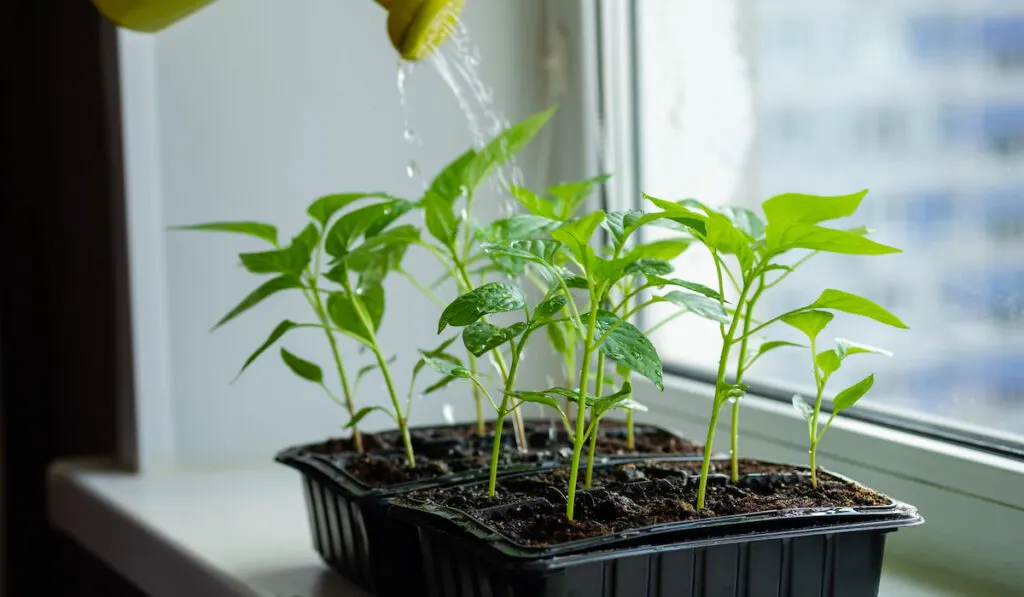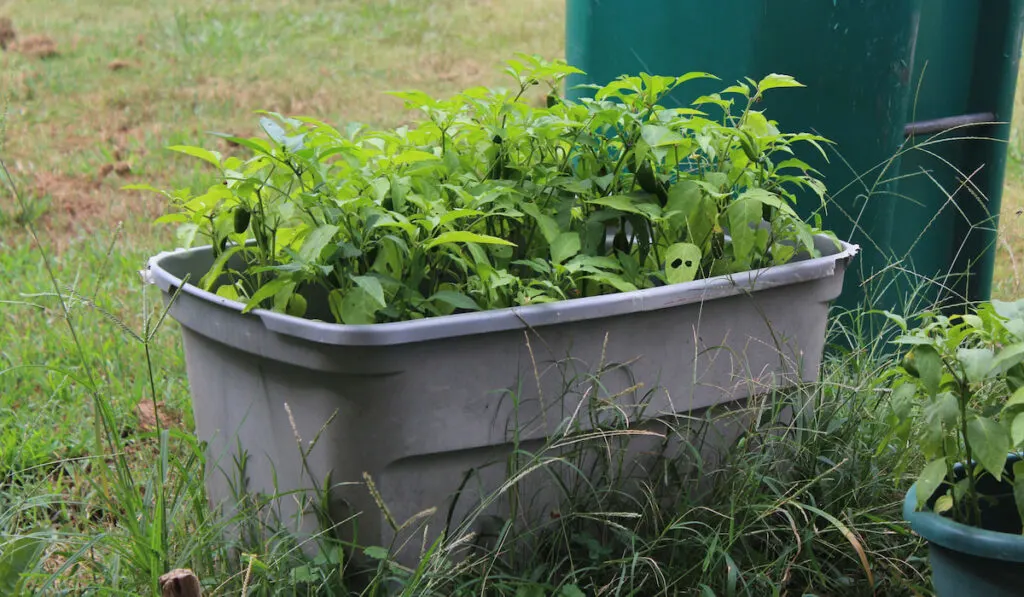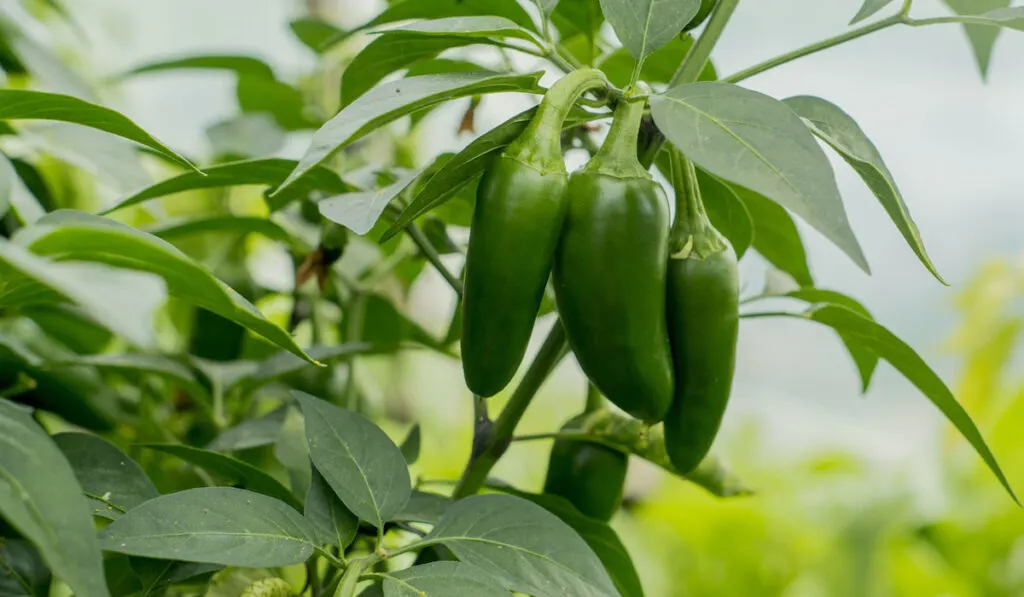Jalapenos are one of the easiest plants to grow at home. They’re the perfect starter plant because they can grow in a pot right on your countertop or the windowsill.
Once they’re ready to eat, you can chop them up in a salad or grill them to put on your burger at your next barbeque.
To grow jalapenos at home, you’ll need the right kind of soil, a good-sized pot depending on how large you want your plant to grow, and plenty of access to direct sunlight.
While jalapenos are a low-maintenance plant, you can’t completely forget about them once you set them up. You’ll need to regularly water them and watch for any issues as the plant grows to maturity.
The feeling of growing jalapenos at home is tough to beat.
There’s just something about seeing a seed grow into a sprout and, eventually, start to produce peppers you can use for cooking at home.
If you’re a beginner gardener, we’ve put together this step-by-step guide to help you grow jalapenos in a pot.
Here are some tips to get great results if you’re keeping the pots at home or want them out on the porch.
Table of Contents
Step 1 – Find the Right Container

Growing jalapenos in the right container is key to growing your jalapenos quickly into healthy mature plants.
Ideally, you’ll germinate your jalapeno seeds and transplant them into their final containers when they’re ready.
You can buy a tray made specifically for sprouting seeds. They look like a large ice cube tray.
You fill each section with soil and bury the seed about halfway down. Then, you wait for the seed to sprout and grow a few sets of leaves before you move it to a larger pot.
Expert gardeners often recommend you first move your sprouts into smaller pots where they can better soak up water from the soil.
Then, once they’re larger and close to outgrowing the smaller pot, you can move them again to their final destination.
Typically, the seeds sprout within a week. They’ll spend around two or three weeks in the smaller pot before needing more space.
Step 2 – Choosing the Right Soil

The first few times you walk into a nursery or a home improvement store to shop for soil can be intimidating.
There are so many different options, all with different prices, touting various features and ingredients.
Jalapenos do best in a balanced soil mix.
Try to find something with a good amount of sand for drainage with high levels of organic matter.
Once you buy your soil, you can supercharge your jalapeno plants by composting. Use ground-up eggshells, old food scraps, and other mush to feed your soil and fill it with nutrients that your jalapeno plants will love.
When in doubt, ask someone at the nursery for help. They will point you in the right direction and make sure you don’t leave the store with the wrong kind of soil.
One of the nice things about jalapeno plants is they are very robust. Even if you don’t compost or you don’t buy the perfect type of soil, there is a good chance your seeds will still sprout.
Step 3 – Getting Your Watering Down Right

Okay, so once you’ve got the soil and the seedling trays, you have to start watering your plants to make them grow.
We learned in elementary school that plants need soil, sun, and water to grow.
But many new gardeners struggle with how much water to give their plants. Over or under-watering your jalapenos will make it harder for them to grow.
You can easily kill sprouts when they’re most fragile, so you need to know how much to give them. We suggest you err on the side of underwatering versus overwatering.
Jalapenos do well when the soil and the plant are allowed to dry before you water them again. Wait until the top of the soil is dry to the touch before adding more water.
Give them water early in the morning or before you go to bed to ensure your jalapenos don’t run out of water when the sun is brightest.
In addition, don’t think you can schedule watering for every other day or twice a week.
Peppers and their water needs vary based on how hot it is, how much sun they’re getting, and other factors. Just water when the soil is dry, and you shouldn’t go wrong.
Finally, water the plant at the base of the stem. Watering the leaves won’t be as effective because the water needs to get to the roots for the plant to thrive.
Step 4 – How Much Sun Is Enough?

Most pepper plants, including jalapenos, do quite well in the heat.
They’re used to getting a ton of sun exposure, so you shouldn’t have too much trouble sitting them on a windowsill or keeping them uncovered in the garden when the sun is overhead.
The main thing you’ll want to watch for is if the sun becomes too much to the point it dries out the plant and the leaves start to turn yellow or brown. Those are signs your plant is either getting too much sun or not enough water.
First, start watering more frequently. If the problems persist, you may want to try limiting how much sun exposure they’re getting.
You can move them to a different part of the house where they won’t be in the sun for as long, or you can build some shade for your garden to give them a break in the afternoon.
Step 5 – When to Prune Your Jalapenos
After about two months of growth, you may want to prune your jalapeno plants to keep them growing well. Pruning is when you cut away part of the plant to make it stronger and grow faster.
While not always necessary, it can be helpful for people who want to maximize their yield from each plant.
Step 6 – Harvesting Jalapenos

Once your jalapeno plant is in its final spot, you must water it regularly, fertilize it (though this step is optional), and wait for the fruits of your labors!
It’s not going to be easy your first time around, but as long as you watch your plants closely and make adjustments before it’s too late, you’ll be harvesting delicious jalapenos in a few months.
Remember to keep a close watch over your plant. React as quickly as possible to any yellowing or wilting leaves by either upping your watering or reducing how much sun it’s getting.
Once they’re ready, you can pick your jalapenos for some fresh salsa or pickle them to make them last longer.
One of the challenges of growing peppers is that there are usually more than you know what to do with.
Canning your jalapenos is an effective way to make them last longer than attempting to eat them all when they’re fresh.

Conclusion
Jalapenos are a great starter plant for aspiring gardeners. They’re robust and can do well in various conditions.
Growing jalapenos in pots requires a bit more attention, but the pots make them convenient because you can get to them easily and make any required adjustments quickly.
The size of the pot matters, but not as much as giving your plants the proper care. A standard-sized planter pot will do just fine for your average jalapeno plant.
Now go buy some basic supplies and give growing jalapenos a shot!
